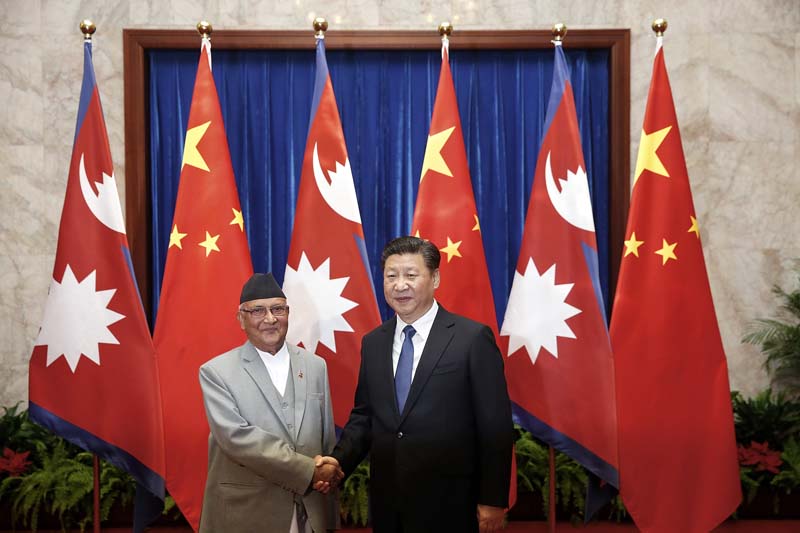
(TibetanReview.net, Sep09, 2018) – China has helped Nepal to reduce its heavy dependence on India for foreign trade and commerce by granting it access to three dry ports or land ports. These are located in Lanzhou, capital of China’s Gansu Province; Lhasa, capital of Tibet; and Xigatse (Shigatse), located in southern Tibet.
Officials of the two governments signed a transit protocol after a marathon meeting on Sep 6 night, giving final shape to the framework treaty which was earlier signed between the two countries when Nepal’s Prime Minister KP Oli visited China in Mar 2016 in the wake of economic blockade by India, reported indianexpress.com Sep 8.
The report cited an official release as saying the formalisation of the agreement, which was signed on Sep 7 morning, allowed the transit of goods from other countries to Nepal via all of China’s ports, including Tianjin, Shenzhen, Lianygang, Zhanziang and dry ports that include Lhanzin, Lhasa and Shigatse.
Under the Transit and Transport Agreement, reported the timesnownews.com, Sep 8, authorities in Beijing will give permits to Nepali trucks and containers taking Nepal-bound cargo to and from Xigatse, Tibet. It cited Joint Secretary at Nepal’s Ministry of Industry, Commerce and Supplies, Mr Ravi Shanker Sainju, as saying the Nepalese traders will be allowed to access rail or road transport to get to the seaports for the international trade.
The report said the agreement gave Nepal access to China through six checkpoints – Rasuwa, Tatopani (Sindhupalchok), Korala (Mustang), Kimathanka (Sankhuwasabha), Yari (Humla), Olangchung Gola (Taplejung).
However, Nepal itself is seen as being not fully ready for the new access. The report cited traders as saying the plan to connect Nepal with China could face issues due to lack of proper roads and customs infrastructure on the Nepalese side of the border. Besides, the nearest Chinese port is located more than 2,600 km from Nepal’s border.
Currently, overland trade to and from Nepal is routed mainly through Kolkata in India, which still remains the nearest sea port, which takes up to three months. New Delhi was also stated to have opened the southern port at Vishakhapatnam for Nepali trade.
The report noted that China had been making fast inroads into Nepal with aid and investment, challenging India’s long-held position as the dominant outside power.





